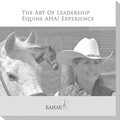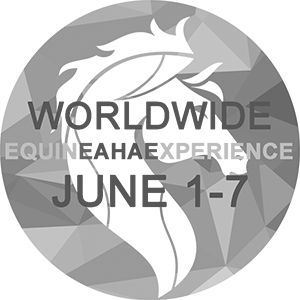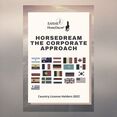|
After the ground rules were set, standards agreed to and safety established, it was time to get to work. During the first 3 days on the range, our job was singular in nature. We did what is known as ‘cutting cows’. What we had to do was to sort the heifers and the calves from the bulls and steers from over 300 head of cattle. Then we had to drive (not in a trailer, but on horseback) those that had been sorted nearly ten miles away, through the desert to the processing station for ear tags and shots.
The Sorting Process The sorting process happens by a method called ‘rodear’. ‘Rodear’ is a Spanish word meaning “to surround” and is the derivation of our ‘rodeo’. On ranches in the Great Basin, as well as throughout the Western United States, many outfits will train their cattle to ‘rodear’. It’s especially helpful if you’re short-handed, because you can pretty easily teach cattle to stay bunched up. This way even one person can go through the herd, rope the ones that need to be removed, doctored, or inspected for sickness, and not have cattle scattered from hell to breakfast when they do. How The Rodear Works Because cattle are herd animals, doing things this way keeps the cattle quiet. It draws upon their need to be together, teaching them there’s safety in numbers and that staying bunched together on a flat, or in a corner is a win-win for them. On horseback, each of us took turns walking slowly into the gigantic ball of cows, with the aim of “cutting” out the ones we weren’t going to drive down the road and letting them back out into the dessert. The line of horsemen around the ‘rodear’ makes a “hole” for the one cow to leave, but as herd animals, they often like to leave with a couple of their friends who need to stay. It gets tricky and you have to be awake and on your toes. Creating A Win-Win Since I was a novice, my teacher went into the rodear with me the first time and coached me through the process, watching every move I made, letting me make mistakes, helping me correct and try again. All this was accomplished without many words, and most importantly, he made sure I had a win (or three) before I returned to the line. I had as many turns going into the rodear as everyone else. And I got yelled at when I was too far back or too far forward in the line. With every correction, there was also a sense that everyone was coming from a place of “we want you to get better” for you, for us and for the cows. It wasn’t one person’s job to point out the leak in my position. Whoever noticed a problem didn’t wait for the boss to notice it. The one who noticed did something about it immediately. That attention to the team’s objectives was expected and welcomed. When A Cow Breaks Loose From time to time as we were doing our sorting, a cow would get past our line and run out into the desert. When that happened, someone would have to ride out hard and fast and bring it back to the herd. While that was happening, the rest of us reconfigured the line and covered until the cowboy was able to rejoin us. There were no discussions about who was going, no fuss, no board meetings or 17 emails. Someone rode out while the rest of us automatically moved into the change and focused on the job in front of us. To be continued…
1 Comment
This month I’m continuing the lessons I learned during my 2017 cow herding experience in Nevada’s Great Basin. Last month I talked about the importance of trust. This month, you’ll read in my article about something that happens from time to time out on the range and how the cowboys handle the “problem.”
You’ll see that things are handled very differently and very swiftly on the range. Unlike in the corporate setting, there are no meetings, no discussions, no emails. There is simply taking responsibility and taking care of the situation immediately. In The Five Dysfunctions of a Team, the second and third dysfunctions are: Fear of Conflict and Lack of Commitment. Fear of conflict is described as follows: The desire to preserve artificial harmony which stifles the occurrence of productive ideological conflict. And, Lack of Commitment cultivates a “lack of clarity or buy-in” preventing team members from making decisions they will stick to. https://www.tablegroup.com/books/dysfunctions When things go sideways out on the range, there is no one pointing fingers, blaming or looking for an ego boost. There is no fear of conflict with any member of the cow-herding team. There is no lack of commitment. Action is taken. Everyone plays their part. No questions asked. I understand that things that happen on the range are more black-and-white, with little to no subtlety involved in the outcome. Find out what happened and how it was handled when you read this month’s article in Part Two: The Assignment. |
AuthorALYSSA AUBREY Archives
November 2019
Categories |
 RSS Feed
RSS Feed



